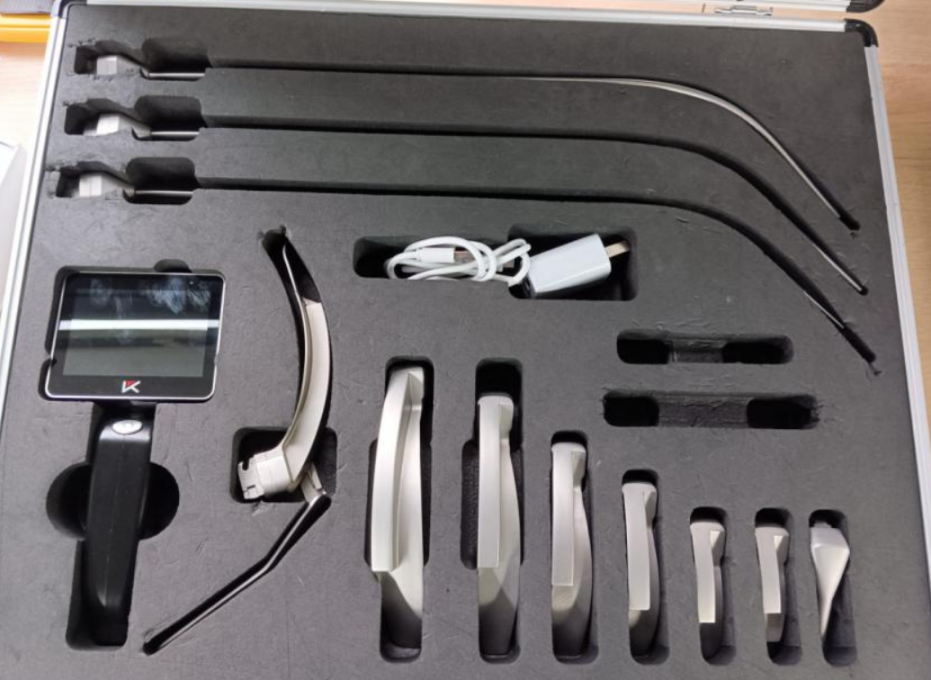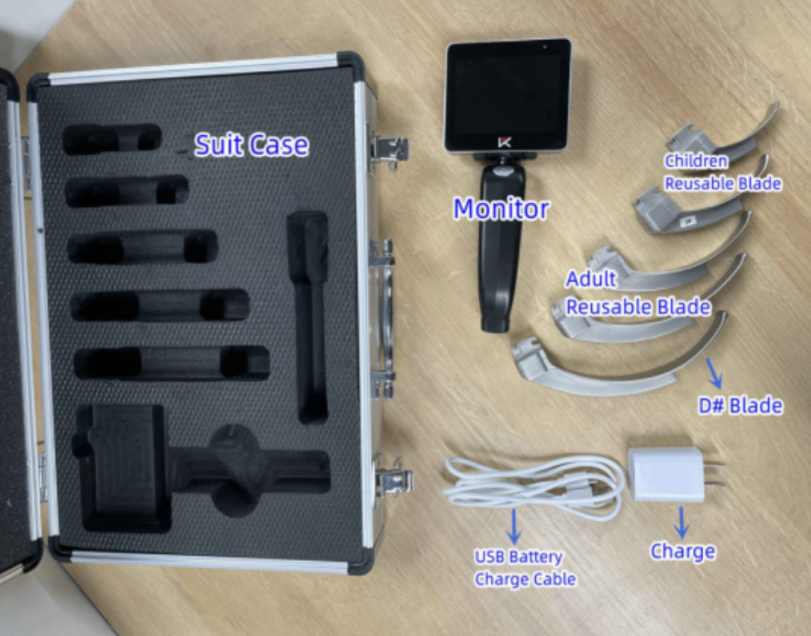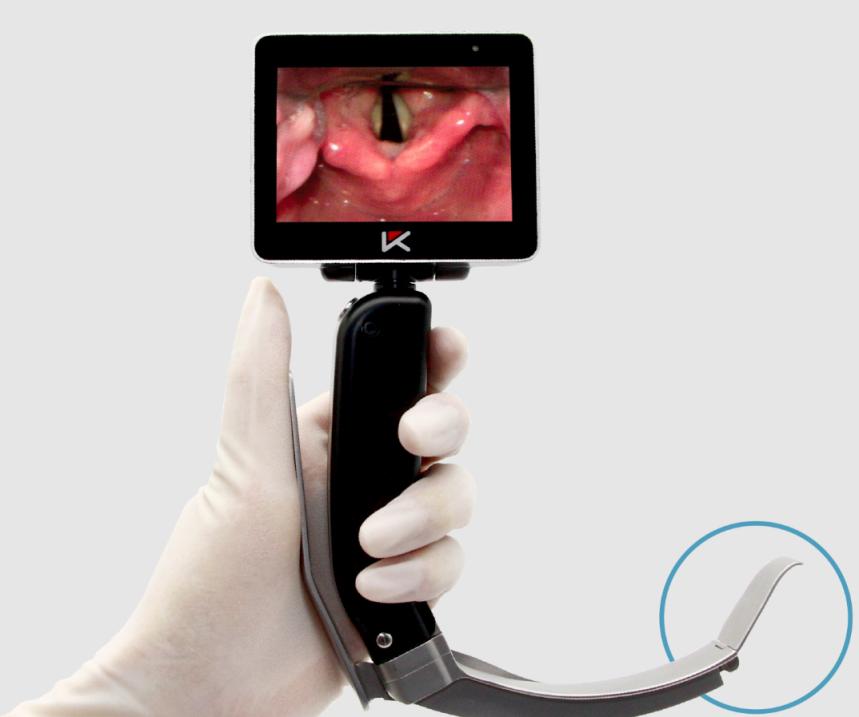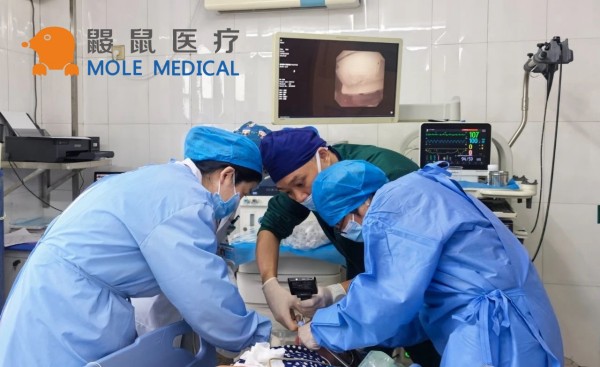Which Blades of Laryngoscope Design is Best Suited for Your Intubation Needs?
Jun 10, 2024
In the intricate realm of airway management, the significance of Blades of Laryngoscope cannot be overstated. Among the leading manufacturers in this field stands Mole Medical, renowned for its commitment to innovation and precision. Let’s explore the exceptional features of Mole Medical laryngoscope blades that elevate them to the forefront of medical instrumentation.

Angle of Vision: A Clear Perspective
1.1 Understanding the Importance
A clear view of the glottis is paramount for successful intubation procedures. The angle of vision determines the scope of visibility during laryngoscopy, directly impacting the clinician’s ability to navigate the airway with confidence and accuracy.
1.2 Mole Medical’s Innovation
Mole Medical Blades of Laryngoscope boast an angle of vision of ≥73º, surpassing industry standards. This wide angle provides clinicians with an expansive field of view, even in challenging airway scenarios, ensuring optimal visualization of the vocal cords and surrounding structures.
1.3 Enhancing Intubation Success
By offering superior visibility, Mole Medical blades enhance the success rate of intubation procedures, particularly in cases where traditional blades may falter. Clinicians can maneuver with precision, confidently securing the airway and safeguarding patient well-being.
Field of Depth: Navigating with Precision
2.1 The Significance of Depth
Navigating the airway requires precision and finesse. The field of depth offered by laryngoscope blades determines the extent to which clinicians can visualize and access critical anatomical landmarks, such as the vocal cords.
2.2 Mole Medical’s Precision Engineering
Mole Medical laryngoscope blades provide a field of depth ranging from 20 to 100 millimeters, setting a new standard for precision and versatility. This extensive range empowers clinicians to adapt to diverse airway anatomies, ensuring accurate placement of the endotracheal tube.
2.3 Optimizing Intubation Outcomes
With the ability to maneuver within varying depths, clinicians using Mole Medical blades can optimize intubation outcomes for patients of all anatomical complexities. The precise visualization afforded by these blades minimizes the risk of misplacement and trauma, enhancing patient safety and comfort.
IP Rating: Durability in Challenging Environments
3.1 A Test of Resilience
Medical environments often expose equipment to liquids, posing a challenge for instrument durability and performance. Laryngoscope blades, in particular, must withstand exposure to fluids while maintaining functionality and hygiene standards.
3.2 Mole Medical’s Resilient Design
Mole Medical Blades of Laryngoscope are engineered with a robust IPX7 rating, ensuring durability and reliability in the face of liquid exposure. This superior waterproofing capability allows the blades to withstand immersion in water up to 1 meter deep for 30 minutes, safeguarding against damage and contamination.
3.3 Ensuring Longevity and Hygiene
By meeting stringent IPX7 standards, Mole Medical blades guarantee longevity and hygiene in demanding medical settings. Clinicians can trust in the integrity of their equipment, focusing on patient care with confidence and peace of mind.
Innovative Blade Designs: Tailored Solutions for Every Scenario
4.1 Customized Solutions for Difficult Airways
Navigating a difficult airway presents unique challenges that demand specialized solutions. Mole Medical’s innovative blade designs offer tailored solutions for clinicians facing challenging intubation scenarios.
4.2 Tilting Tip Blades: Precision in Motion
Mole Medical’s tilting tip blades are engineered to provide controlled movement, particularly in difficult airways. By enabling precise adjustments of the blade tip, clinicians can navigate tight spaces and anatomical obstructions with ease, ensuring successful intubation in even the most challenging circumstances.
4.3 Enhanced Flexibility and Maneuverability
With a diverse range of blade options, including tilting tip designs, Mole Medical equips clinicians with the flexibility and maneuverability needed to tackle any airway challenge. These innovative designs empower clinicians to overcome obstacles and deliver optimal patient care, regardless of anatomical complexity.

Blade Size: Tailoring Solutions to Individual Anatomy
5.1 Understanding the Importance of Variety
Airway anatomy varies widely among patients, presenting clinicians with unique challenges during intubation. The availability of multiple blade sizes is essential for accommodating these differences and ensuring optimal outcomes for every individual.
5.2 Mole Medical’s Extensive Range
Mole Medical proudly offers 8 different blade models, providing clinicians with a wealth of options to choose from. This extensive range covers a spectrum of sizes, enabling clinicians to select the most suitable blade for each patient, regardless of anatomical nuances.
5.3 Optimizing Intubation Outcomes
By tailoring blade size to individual anatomy, clinicians can optimize intubation outcomes while enhancing patient comfort and safety. Mole Medical’s diverse selection empowers clinicians to navigate airways with precision and confidence, minimizing the risk of complications and ensuring successful intubation procedures.
Deciphering the Selection Process: Tips for Choosing Laryngoscope Blades
6.1 Assessing Patient Characteristics
One of the primary considerations when selecting laryngoscope blades is the patient’s anatomical features. Factors such as neck mobility, mouth opening, and the presence of dental prosthetics influence the choice of blade size and design. Mole Medical offers a diverse range of blades, ensuring that healthcare professionals can effectively cater to the anatomical variations encountered in their patient population.
6.2 Understanding Indications and Preferences
Different clinical indications and procedural requirements necessitate the use of specific Blades of Laryngoscope. For instance, the Macintosh blade is favored for routine intubations, whereas the Miller blade is preferred for scenarios involving limited mouth opening or anterior airway visualization. By understanding these indications and aligning them with individual preferences, healthcare providers can make informed decisions when selecting laryngoscope blades from Mole Medical’s comprehensive portfolio.
6.3 Considering Skill Level and Experience
The proficiency and experience of the operator also influence the choice of laryngoscope blades. Novice practitioners may benefit from using blades with simpler designs and enhanced maneuverability to facilitate skill acquisition and confidence building. Conversely, seasoned professionals may opt for specialized blades tailored to specific clinical challenges or personal preferences. Mole Medical caters to healthcare providers across all skill levels, offering a spectrum of blades designed to meet varying proficiency levels and clinical requirements.

Conclusion: Elevating Airway Management with Mole Medical Blades
In the realm of airway management, precision and innovation are paramount. Mole Medical Blades of Laryngoscope embody these principles, offering clinicians unparalleled visibility, precision, and reliability. With a commitment to excellence and a focus on advancing patient care, Mole Medical continues to redefine the standards of laryngoscope blade technology, empowering clinicians to navigate the complexities of the airway with confidence and expertise.
Categories
Latest Articles

Disposable Nephroscopes: Redefining Safety & Efficiency in Urology
Introduction The shift towards minimally invasive urological surgery has found a pivotal ally: the disposable nephroscope. As traditional reusable scopes grapple with persistent biofilm contamination risks and soaring sterilization costs, the global medical community is rapidly adopting single-use solutions. This article analyzes the clinical value, technological evolution, and dynamic innovation landscape driving this transformative shift. ... Read more

Disposable Video Laryngoscope Blades: The Ultimate Solution for Preventing Cross-Contamination
In the operating room, as the cold light of a video laryngoscope illuminates a patient’s airway, an age-old medical challenge is being redefined: How can life-saving instruments avoid becoming vectors of infection? Jiangsu MoleMedical drives an innovative safety revolution—replacing reusable devices with single-use, sterile laryngoscope blades that create a pure barrier for critical airways. Traditional video ... Read more
-2.jpg)
FDA & CE Approved Video Laryngoscope: What Makes It Stand Out?
Introduction In high-pressure emergencies and precision-driven operating rooms, video laryngoscopy is revolutionizing airway management. Mole Medical’s FDA and CE-certified technology replaces tactile-dependent “blind intubation” with real-time visual navigation – enhancing safety, accuracy, and clinical outcomes worldwide. Why Certification Matters Mole Medical’s dual certifications validate its global compliance and performance: FDA Clearance: Rigorous validation of safety/efficacy ... Read more

Mole Medical Showcases Advanced Endoscopy Solutions at CMEF Autumn 2025, Driving Global Partnerships
Guangzhou, China – September 26-29, 2025 – The 92nd China International Medical Equipment Fair (CMEF Autumn) concluded successfully on September 29th at the Canton Fair Complex in Guangzhou. Mole Medical Technology Co., Ltd. (Mole Medical) made a significant impact at the event, drawing global medical professionals and partners to its booth (Hall 2.1, Stand Q24) ... Read more

How to Use Disposable Ureteroscopes Safely and Efficiently
In the field of urology, the application of disposable electronic ureteral-kidney pelvis endoscopy catheters is leading the technological innovation in minimally invasive surgeries. According to the 2024 multi-center research data from China’s urology department, among the over 5,000 surgeries included, the patient group using disposable catheters performed significantly better in key indicators such as operation ... Read more



